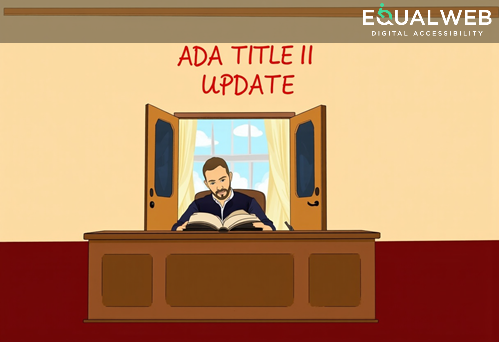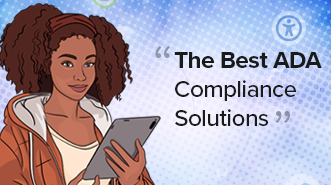Step 1: Define the Scope of the Audit
Before starting the audit, it is essential to establish the scope and objectives. This involves identifying which sections of the website or application need to be tested. Typically, high-traffic pages, transaction-related pages, and essential navigation elements are prioritized for evaluation.
It is also important to determine the level of compliance needed. The Web Content Accessibility Guidelines (WCAG) are divided into three levels: A, AA, and AAA, with AA being the most commonly targeted for compliance. Additionally, businesses should consider whether the audit will focus only on web-based platforms or include mobile applications.
Step 2: Use Automated Testing Tools
Automated tools provide a quick overview of common accessibility issues that may be present on a website. These tools scan web pages and generate reports highlighting elements that do not meet accessibility standards. Popular tools include WAVE, axe Accessibility Checker, Google Lighthouse, and EqualWeb’s
Accessibility Checker.
While automated testing is valuable, it does not provide a complete picture of accessibility. These tools primarily identify technical errors such as missing alt text, improper heading structures, and low contrast issues, but they often miss contextual usability barriers that impact real users. Therefore, automated testing should be supplemented with manual testing.
Step 3: Conduct Manual Testing
Manual testing is a crucial component of an accessibility audit, as it helps detect issues that automated tools might overlook. This process involves evaluating a website through the lens of an individual with disabilities. Key aspects of manual testing include:
Testing keyboard navigation ensures that all elements can be accessed without a mouse. Interactive components such as buttons, dropdowns, and links should be fully navigable using the Tab key. If users cannot interact with essential elements without a mouse, the website is not fully accessible.
Screen reader compatibility is another critical aspect. Websites should be tested with screen readers such as NVDA or JAWS to ensure that visually impaired users can navigate and understand the content. Logical reading order must be verified, ensuring that the page structure makes sense when accessed through assistive technology.
Form accessibility should also be reviewed. Form fields must include clear labels, error messages must be descriptive, and focus states should be clearly visible when navigating with a keyboard. Forms that lack these elements create barriers for users who rely on screen readers or keyboard navigation.
Step 4: Review Color and Contrast
Color contrast plays a vital role in readability and accessibility. Individuals with visual impairments, including color blindness, may struggle to read text with poor contrast ratios. Equalweb
Color Contrast Checker and the Toptal Color Blindness Simulator can help test and optimize contrast levels.
The WCAG guidelines recommend a contrast ratio of at least 4.5:1 for normal text and 3:1 for larger text. Designers should ensure that background and foreground colors provide sufficient contrast for readability. Additionally, color should not be the sole indicator of meaning—alternative cues, such as icons or underlined text, should be used for interactive elements.
Step 5: Evaluate Multimedia Content
Websites often include multimedia elements such as images, videos, and audio. These must be accessible to users with disabilities. Captions and transcripts should be provided for all videos to assist individuals who are deaf or hard of hearing.
Alt text should be added to images to ensure that screen readers can describe visual content to visually impaired users. Additionally, audio descriptions should be available for videos that rely on visual storytelling. Providing accessible multimedia content enhances user experience and ensures compliance with accessibility regulations.
Step 6: Check Interactive Elements and Forms
Forms, modals, and other interactive elements must be fully accessible. Form labels should clearly describe each input field, and error messages should provide meaningful guidance. Users must be able to navigate interactive components efficiently using a keyboard alone.
Focus indicators play a crucial role in accessibility. When users navigate via keyboard, the focus should be visibly highlighted to show which element is currently active. This ensures that users with motor disabilities can interact with the website effectively.
Step 7: Mobile Accessibility Testing
As mobile usage continues to grow, ensuring accessibility on smartphones and tablets is essential. Mobile accessibility involves testing responsive design, verifying that content scales properly across different screen sizes, and ensuring that touch targets are appropriately sized.
Voice command usability should also be tested, allowing users to interact with the site using voice-controlled assistants. Many individuals with mobility impairments rely on voice navigation, so ensuring a seamless experience on mobile is key.
Step 8: Generate a Report and Prioritize Fixes
Once the audit is complete, the next step is compiling a detailed report outlining the findings. The report should include a list of identified issues, categorized by severity, along with recommended fixes.
Issues that create significant barriers to accessibility, such as missing alt text or unresponsive navigation, should be prioritized. The report should also include a roadmap for implementing the necessary changes, with assigned responsibilities and deadlines.
Step 9: Implement Fixes and Re-Test
After making the recommended fixes, the website should undergo a second round of testing to ensure that accessibility improvements have been successfully implemented. It is essential to verify that past issues have been resolved and that no new barriers have been introduced.
This iterative approach ensures continuous improvement and long-term accessibility compliance.
Step 10: Establish an Ongoing Accessibility Plan
Maintaining accessibility is an ongoing process rather than a one-time effort. Businesses should integrate accessibility testing into their regular development cycles. New content, updates, and features should be reviewed for compliance before deployment.
Regular training should be provided to designers, developers, and content creators to ensure that accessibility best practices are followed. Keeping up with WCAG updates and encouraging user feedback can also help maintain a high level of accessibility.
Conclusion
Conducting an accessibility audit is a fundamental step toward creating an inclusive digital experience. By identifying and addressing accessibility barriers, businesses can improve usability, enhance their reputation, and ensure compliance with legal standards.
Accessibility is not just about compliance—it is about creating a web that is usable by everyone, regardless of ability. By following these steps and committing to ongoing improvements, organizations can provide a better experience for all users.




